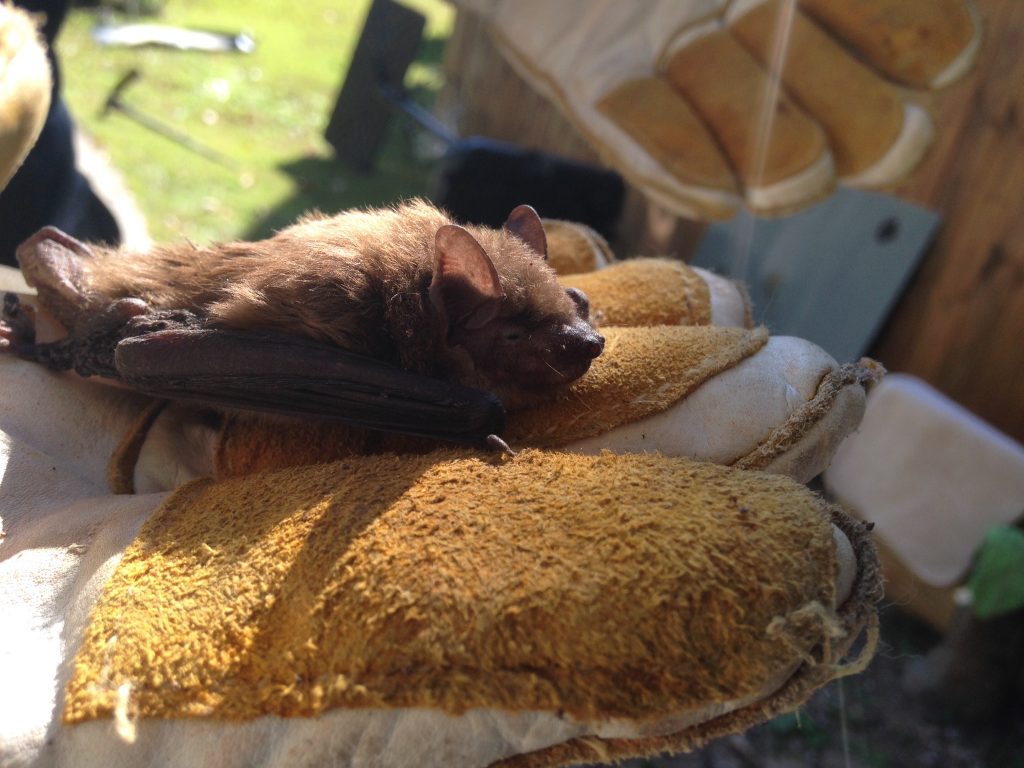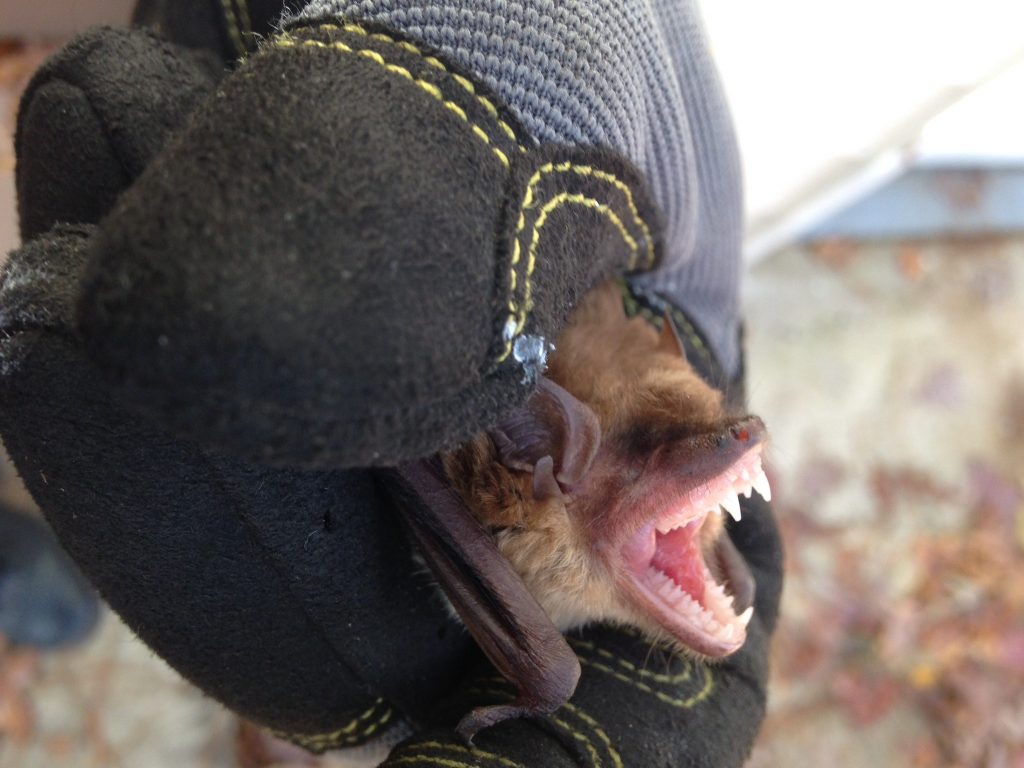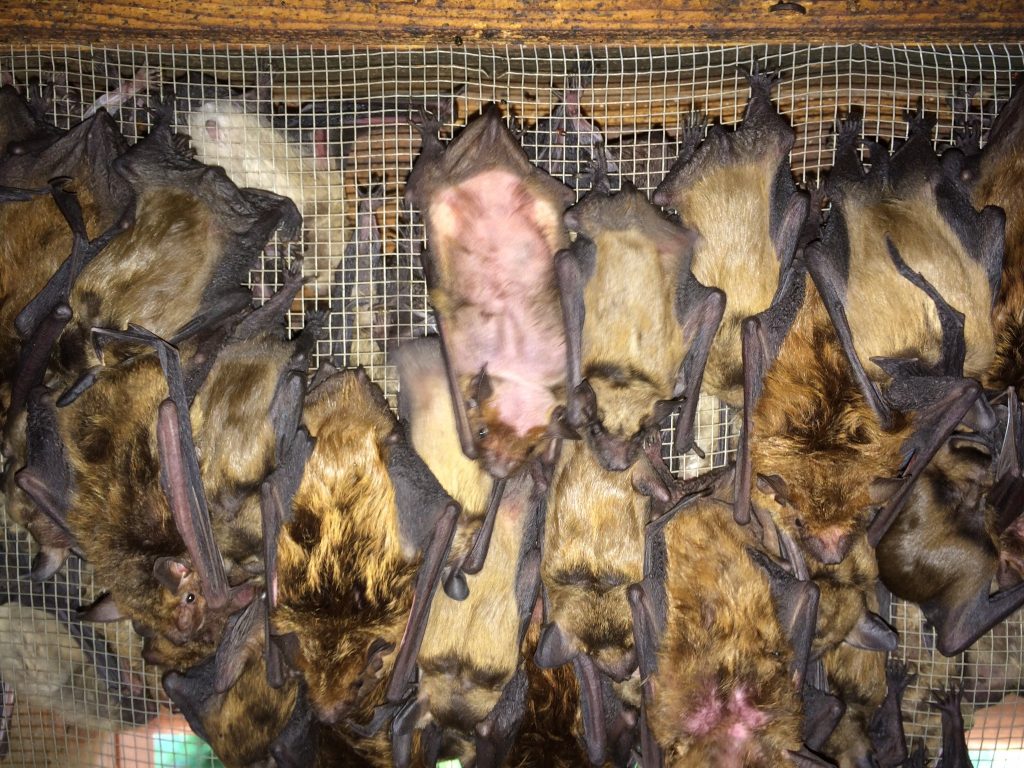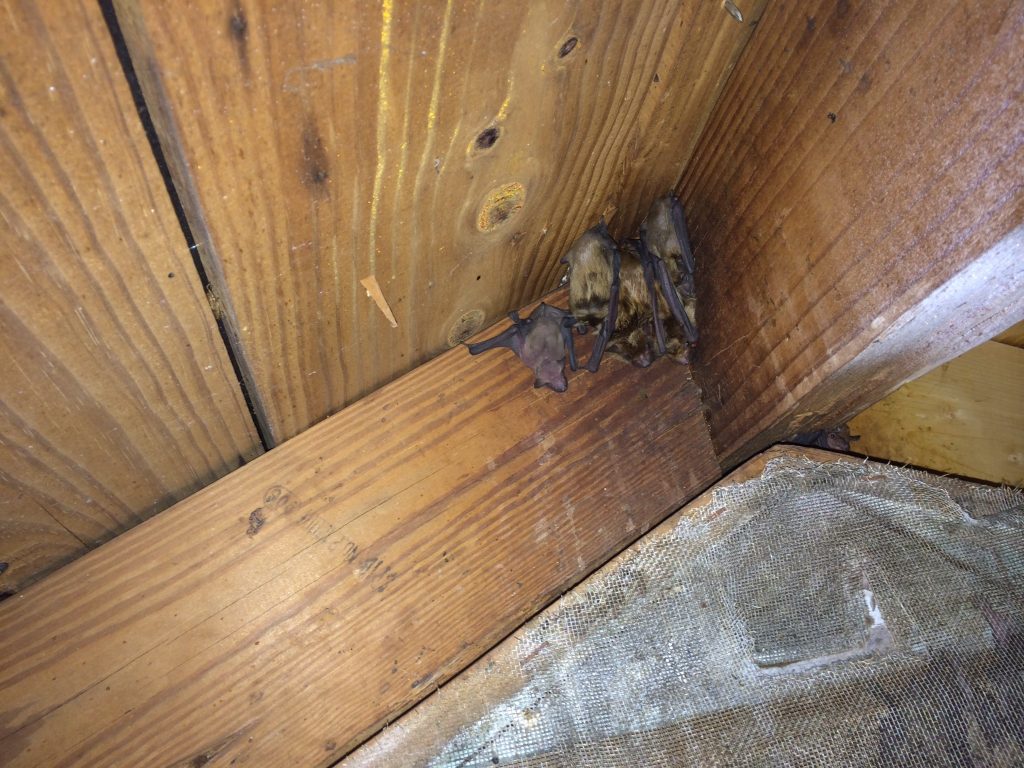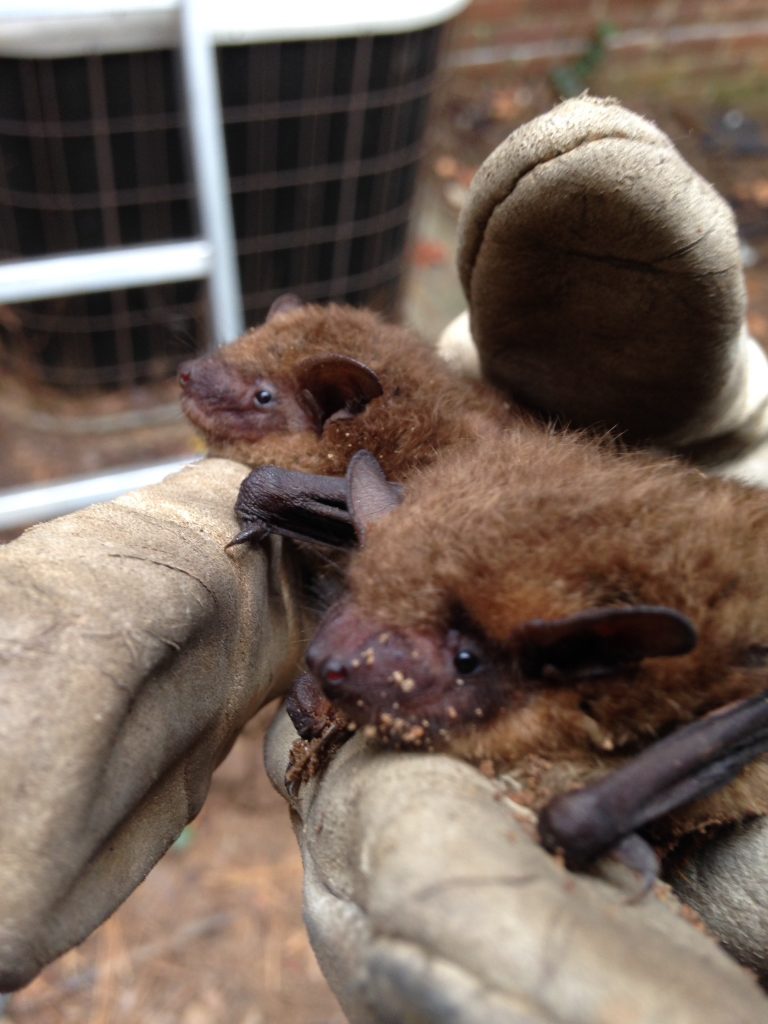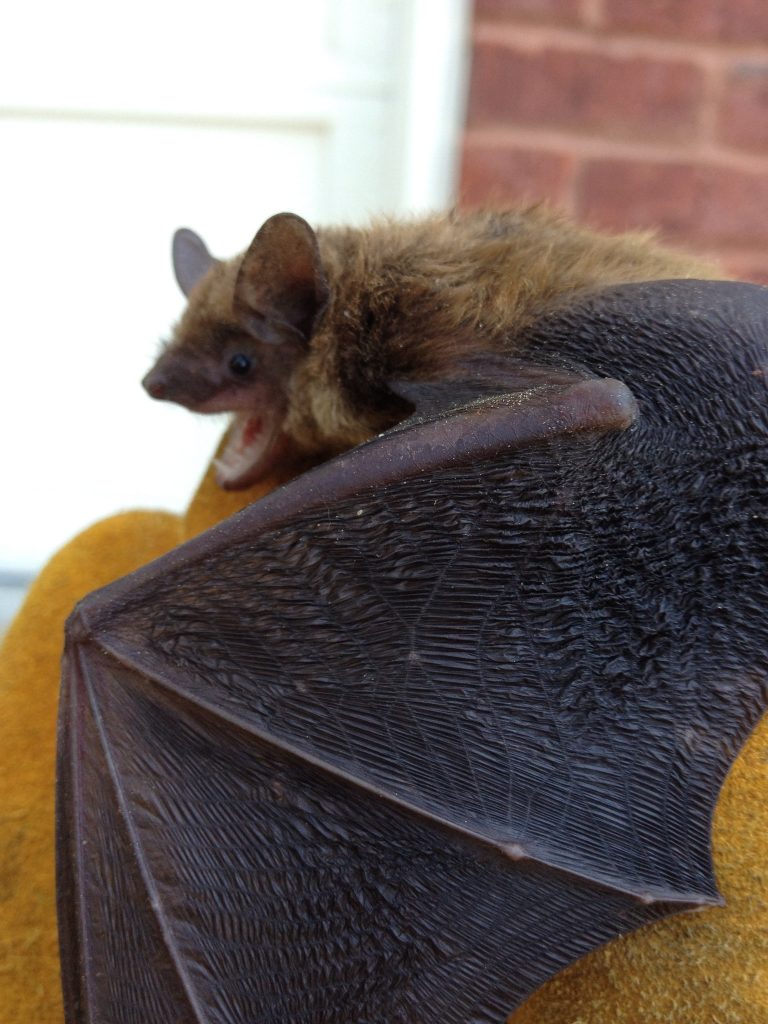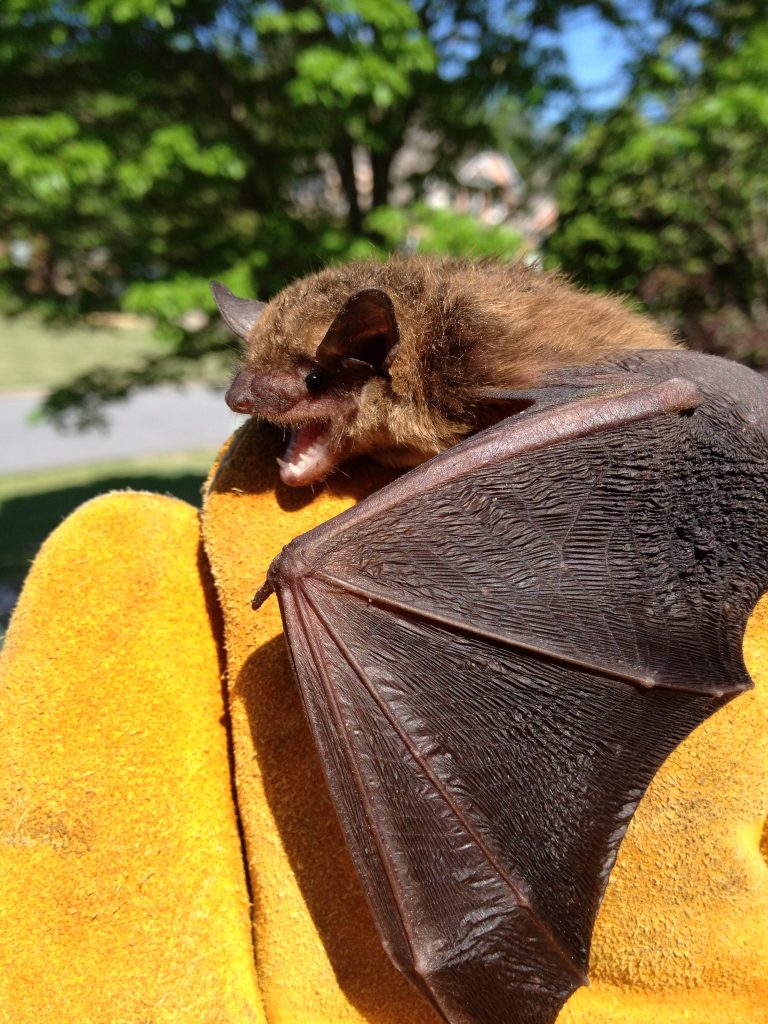There are few species that can evoke the kind of fear that bats can. While there are risks, their appearance and reputation can exaggerate reality. The bats we have in North America are typically NOT aggressive and do not want anything to do with us. Our interaction with bats is quite limited and contact between us and them is rather rare and so we often pay them no mind. However, if you have or have had a bat (or bats) in your attic or within your home, you have two main concerns for your health. Rabies and Histoplasmosis.
Bats are considered a transmitter of rabies, and though this does not mean that every bat has it you want to exercise caution as there are risks to contact with them because all it takes is a small scratch or a bite. Because bats are so quiet and they are nocturnal it can make detecting them difficult even in flight, and this is where the greatest risk of exposure comes from when you are sleeping. At night while you are resting if the bat has been flying around trying to escape but is unable to, they will eventually tire and need to rest. Due to their size and the fact our living spaces are air-conditioned the bats have difficulties staying warm and will often seek out a source of heat and you sleeping in your bed is an option. If that happens and someone rolls over on the bat or frightens it they could be scratched or bit, and while most adults would be aware if this happens there are exceptions such as the elderly and very young children. This is important because rabies needs to be treated as early as possible before the actual onset of symptoms. (CDC Link). Whenever in doubt, contact a medical professional immediately! The health and safety of you and your family is of primary importance.

Bat removed by hand in Alpharetta 
One of the bats from a removal in Cumming, GA 

Bats with a flightless baby Big Canoe GA 
These cute, fuzzy bats were removed from an Attic in Johns Creek. 

A bat posing after being gently removed from Milton, GA.
Now if bats are in your attic or entering other gaps in your home up high but are not entering your living space, the danger is not as great but there are still issues that will need to be addressed. If the bats are left alone in your structure for too long, the guano and urine will become an issue. Especially because bats are a colonizing animal, which means they roost in groups (sometimes very large groups) the guano and urine can build up quite a bit. Causing staining on your house, very strong odors, and even risks exposing you or others to Histoplasmosis depending where they are entering and residing in your structure. Bats are federally protected because of their vulnerability to many factors and how beneficial they are due to eating a large number of insects every night (including lots of mosquitoes!). There is also a period of time where bats have flightless young and the adults can leave them behind while they are out feeding to return and nurse later. Combine this with the fact that bats fly and can access a structure in a very hard to reach place and this makes it nearly impossible for most homeowners to address them alone. When seeking professional assistance, it is important that the laws are followed and that care is taken in removing the bats. Beyond the humane treatment concerns, if the removal process is not done well the bats can start moving about in the structure trying to find an escape and can get into the living space or die in the structure, creating another issue entirely…. finding the dead animals and removing them because of the smell.
Finally, after they are removed from your home, it’s always a good idea to install a bat box away from your house. You get the benefits of having the bats around without them being in your structure. BatConservation.org has an excellent guide on locating and installing a bat box to maximize your chances of bats roosting in it! While we do not want them within our home, we all could use more of them outside where they play their part in the environment and help manage insects.

